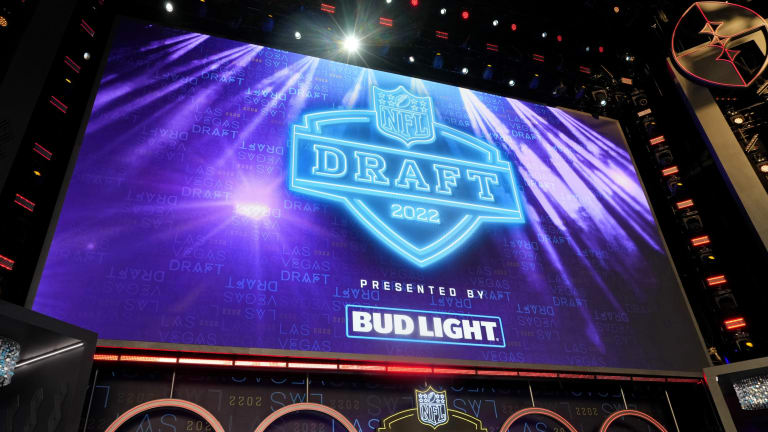
What do the Vikings draft grades tell us? On paper, it wasn't great

It’s an annual tradition of the post-draft weekend: Fans perusing through all the NFL draft grades and getting mad when analysts give your team anything but an A.
So, let’s look at how draft experts viewed Minnesota’s weekend and (maybe) get mad.
René Bugner (@RNBWCV on Twitter) puts together this chart annually, compiling draft grades from 18 different experts. It’s not a perfect list. But it does a good job of encapsulating how each team did in the draft. Take a look.
Now, let’s just get this out of the way first: Most draft grades are pretty friendly. As I mentioned above, every fanbase wants to be optimistic about its draft. It is what the draft is for. Nobody wants to be told their team just did a horrible job, especially for the perennially bad franchises. For them, this weekend is their Super Bowl. So most analysts do not critique very hard. Otherwise, they risk getting absolutely roasted on Twitter for this rather trivial exercise.
Just look at this year’s chart. NFL.com’s Chad Reuter gave an average grade of an A-. PFF’s average grade was a B+. Thor Nystrom from NBC Sports Edge was the toughest grader by far, averaging a C+. Only 5 F’s were handed out in total.
The fact that the Vikings cumulative GPA ended up as a 2.79, roughly a B- average, is not particularly noteworthy. What is noteworthy is where they rank amongst every other team. The Vikings ranked 20th, meaning that compared to the rest of the NFL, the graders believe Minnesota had a below-average draft.
And of the 12 teams below the Vikings, seven did not have first-round picks. The Raiders' first pick was at 90, the Dolphins’ was at 102 and the Rams’ was at 104. That does not paint a great picture for Minnesota.
PFF has found that draft grades are biased towards the teams with the most draft capital. Here’s a chart to illustrate it. You can see that as draft capital increases, so do the teams’ grades.
Minnesota ranked 11th in total draft capital and made 10 picks, tied for 5th most in the league. Those metrics indicate Minnesota should’ve graded out at least in the upper half of the league and potentially in the top-10.
So why did they drop?
Looking through a lot of these analysts’ articles, most liked the Vikings’ selections of Lewis Cine and Andrew Booth Jr. but thought Minnesota really mis-valued prospects on days 2 and 3 of the draft.
Jack Lichtenstein (@jacklich10 on Twitter) ran an analysis of where each team picked their prospects and how that compared to where they were expected to be drafted according to the consensus big board. Basically, did the Vikings get good value? The analysis found Minnesota did not use its draft capital effectively.
Here’s another way to look at it. Lichtenstein charted each of the Vikings’ picks. On the y-axis (vertical) is the prospects’ consensus big board ranking and on the x-axis (horizontal) is their draft position. Any pick that is above the dotted line represents a reach (based on the big board ranking) while anything under the dotted line represents good value.
According to the consensus rankings, the Vikings reached on 90 percent of their picks. Only one selection – Andrew Booth Jr. – was selected later than his big board position. Only the New Orleans Saints reached more often.
The other element that influenced graders most often was the Vikings’ myriad of trades. Some thought the Vikings didn’t get enough in their first-round trade back with the Lions. Others thought the value was fair but the passing on premium talents at No. 12 – like Jameson Williams – was the wrong move. And there were also a fair number of analysts that bumped their grades up because of Minnesota’s six trades.
Now, whether or not you believe the Vikings won their trades depends on which trade chart you look at. The Jimmy Johnson chart showed Minnesota lost its trade with the Lions. The Fitzgerald-Spielberger chart deemed Minnesota the winner.
PFF ran an analysis of all the trades in the draft. It found Minnesota gained value overall and found it generated the 8th-most value with its trades.
However, when you combine that value gained in trades alone with the overall value of the Vikings’ draft, it shows Minnesota lost value. It’s another indicator that the Vikings under-achieved.
This clearly establishes that, on paper, the Vikings did not knock this draft out of the park.
If Lewis Cine turns into a pro bowl safety and Andrew Booth Jr stays healthy and fulfills his talent and potential as a No. 1 cornerback, the sentiment will change.
I looked back at 2019 draft grades and only two outlets gave the Garrett Bradbury selection worse than a B+. The Dru Samia pick drew mostly A and B grades. Meanwhile, practically nobody liked the selection of K.J. Osborn in 2020. It’s going to take a while to have closure on these grades.













